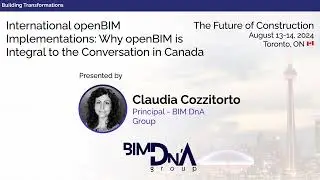Bridging The Performance Gap by Integrating BIM with Energy Modeling
Jean Carriere, Business Development Manager, Integrated Environmental Solutions Limited, speaks about Bridging The Performance Gap by Integrating BIM with Energy Modeling.
The BIM project is initiated by the architect with a schematic design which is typically done at a level of detail aimed for constructability. The integration of this model into a building energy modeling software offers the design team with an opportunity to generate energy performance feedback much faster.
The objective is to create the building loads from the architectural design model and then use this information (BIM) to design and right-size the HVAC systems. The design team can then measure and verify the energy performance indicators in order to make informed decisions on energy conservation measures. This process is designed to promote iterative energy simulations to dive deep into energy savings.
The process begins with the integration of BIM by exporting a good quality gbXML file from a BIM project. These files can be imported into most energy modeling applications, such as the IES Virtual Environment, which then creates a digital link between BIM and energy modeling. As the federated BIM project evolves in complexity and level of detail throughout the design process, the energy modeling integration link is maintained, and the information parameters are synchronized.
We can use these information parameters to exchange data between the two applications. This way the building’s information resides inside the BIM and the simulated data is accurately representing the architectural and mechanical/electrical design. Having accurate information in your project promotes synergy within the design team by connecting them to the information relating to energy performance.



















